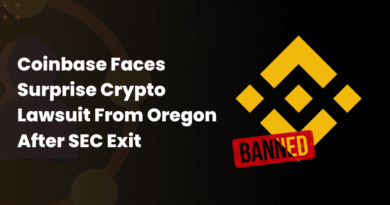How MEV and Front-Running Undermine Fair Trading in DeFi
What Is MEV and Why Should You Care?
If you’ve been exploring the world of decentralized finance (DeFi), you’ve probably come across the term MEV—short for Maximal Extractable Value. Sounds technical, right? But don’t worry, it’s a simple concept once you break it down.
At its core, MEV is about giving certain people an unfair advantage when executing trades on a blockchain.
Let’s say you’re trying to make a trade on a decentralized exchange (DEX) like Uniswap. Before your transaction is confirmed, someone else spots it and pushes their own trade ahead of yours to profit from the price change your trade will cause. That’s MEV in action.
This tactic is closely related to something you may have heard before—front-running. Both allow savvy insiders to earn money at the expense of everyday traders.
How MEV and Front-Running Work
Think about how trades go through on a blockchain. When you place an order, it joins a public list of unconfirmed transactions called the mempool. Anyone can see these transactions before they’re finalized.
Now imagine a group of people who can:
These actors—known as searchers or arbitrageurs—can take advantage of your trade by executing theirs first. This is made possible with powerful algorithms and bots.
So when you hit “swap,” instead of getting the price you saw, it’s already worse. You’re left with slippage, and the MEV actor walks away with a profit while you lose out.
Why MEV Hurts Everyday DeFi Users
You might be thinking: “Okay, but how does this impact me?”
Here’s how it affects you when trading on DeFi platforms:
If you’re a casual trader or just getting started in DeFi, this makes the experience confusing and unfair.
Who Benefits from MEV?
Most of the profits from MEV go to a select few:
These groups often have the technical know-how and access to infrastructure that regular users don’t.
And while some argue that MEV is “just part of how DeFi works,” that doesn’t mean it should be accepted.
The Role of Validators and Bots
Validators play a curious role here. They don’t just confirm transactions; they decide the order of transactions in a block.
If a validator spots a profitable situation—for example, an arbitrage opportunity—they can include a front-running transaction before yours to claim the profit.
Some validators work with searchers directly. Others run their own bots. It’s a system that, in many ways, rewards bad behavior and hides it under complex technical layers.
Types of MEV Strategies
The most common forms of MEV include:
Have you ever placed a trade, and the price changed suddenly before it was confirmed? That could’ve been the result of a sandwich attack.
Real-World Example: The Sandwich Attack
Let’s say you want to buy 100 tokens of a new project. A bot sees your intent in the mempool and quickly:
1. Buys the tokens first, driving up the price
2. Lets your transaction go through at the higher price
3. Sells the tokens right after your trade for a quick profit
You pay a worse price, and the attacker makes free money—without adding any value to the system.
Can MEV Be Stopped?
Eliminating MEV entirely is hard, but several projects are working on solutions to reduce its harm.
Some approaches include:
One growing idea is Proposer-Builder Separation (PBS), where those who build blocks are separated from those who propose them. This makes it harder for validators to exploit MEV directly.
Still, many of these technologies are in the testing phase and not widely used yet.
How You Can Protect Yourself
If you’re a DeFi user, you’re not powerless. Here are a few simple ways to reduce your risk:
Even small changes can go a long way in making your trades more secure and predictable.
Why This Matters for the Future of DeFi
If DeFi is going to be open and accessible to all, it needs to be fair.
Letting insiders make easy profits from users through MEV strategies pushes people away from using decentralized tools. It creates a two-tier system:
This flies in the face of what DeFi promises—real financial freedom and equal access.
If the community seriously wants DeFi to grow, it needs to address MEV head-on.
Final Thoughts
The rise of MEV and front-running is a strong reminder that just because something is “decentralized,” it doesn’t make it fair by default.
So the next time you make a trade on a DEX and notice the price slipping, take a second to think: who really benefited from that deal?
Blockchain promises transparency and fairness. But as users, we need to stay informed and push for tools and changes that make that promise a reality—not just for insiders but for everyone.
The fight against MEV isn’t just technical—it’s about fairness. And that’s something we all have a stake in.









